
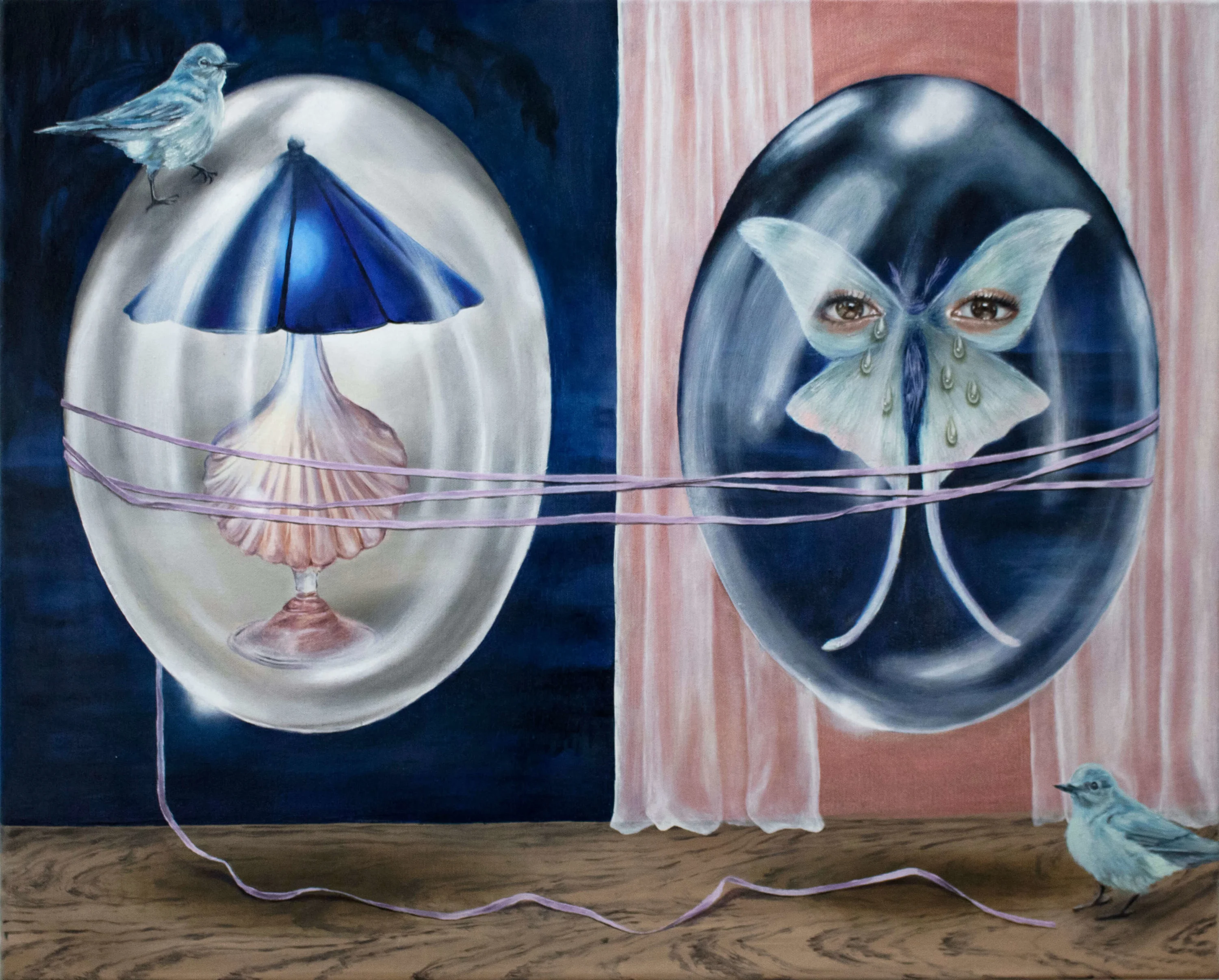
Growing up on the Isle of Man—an island in the Irish Sea, steeped in folklore and superstition—Ella Garvey was more aware of mysticism in her early life than most. Now living in London, her paintings combine this early world of inspiration with a constant study of all things mystical. She tells Alix-Rose Cowie how she’s always making decisions, both in her everyday life and in her painting practice, that keep one of her feet firmly in the world of dreams and fantasy, “where anything is possible.”
Artist Ella Garvey recently got a small studio in London to work from. She hasn’t been there very long so the space is more bare than she’d like but laid out on her desk are some trinkets: shells, stones and an antique jewelry box. “They remind me to keep seeking beauty,” she says, “and they allow me to tap into a place of sentimentality and melancholy.” She collects things on walks outdoors, picking up and pocketing the treasures she finds most beautiful. “I think I've always had this sort of sensitivity to beauty and to what lies beyond.”

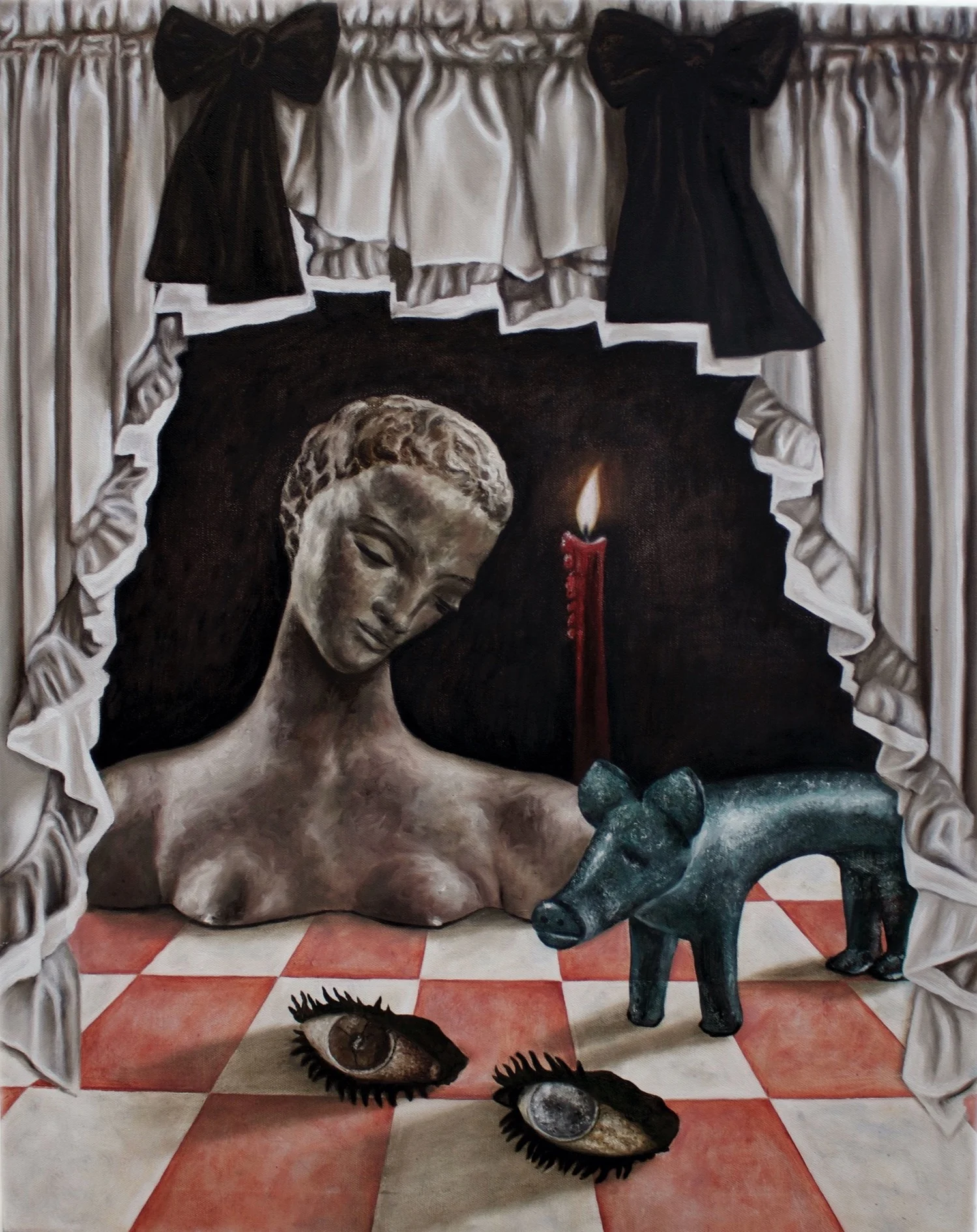
Ella grew up on the Isle of Man, a place steeped in folklore and superstition. Tales of troublesome fairies and supernatural creatures from the underworld were woven into the place so much so that she didn’t take any notice of it. Only once she moved to London to study did she realize how special, and odd, it was that these tales were so embedded in the everyday. “Moving to London, I yearned for that more animated, magical sort of life so I delved more into the stories of the land that surrounded me,” she says. Her curiosity opened up an exploration into mysticism, myth, rituals and early religions which naturally seeped into her art. “I've started creating my own meaning and my own stories through these little pockets of knowledge I've collected.”
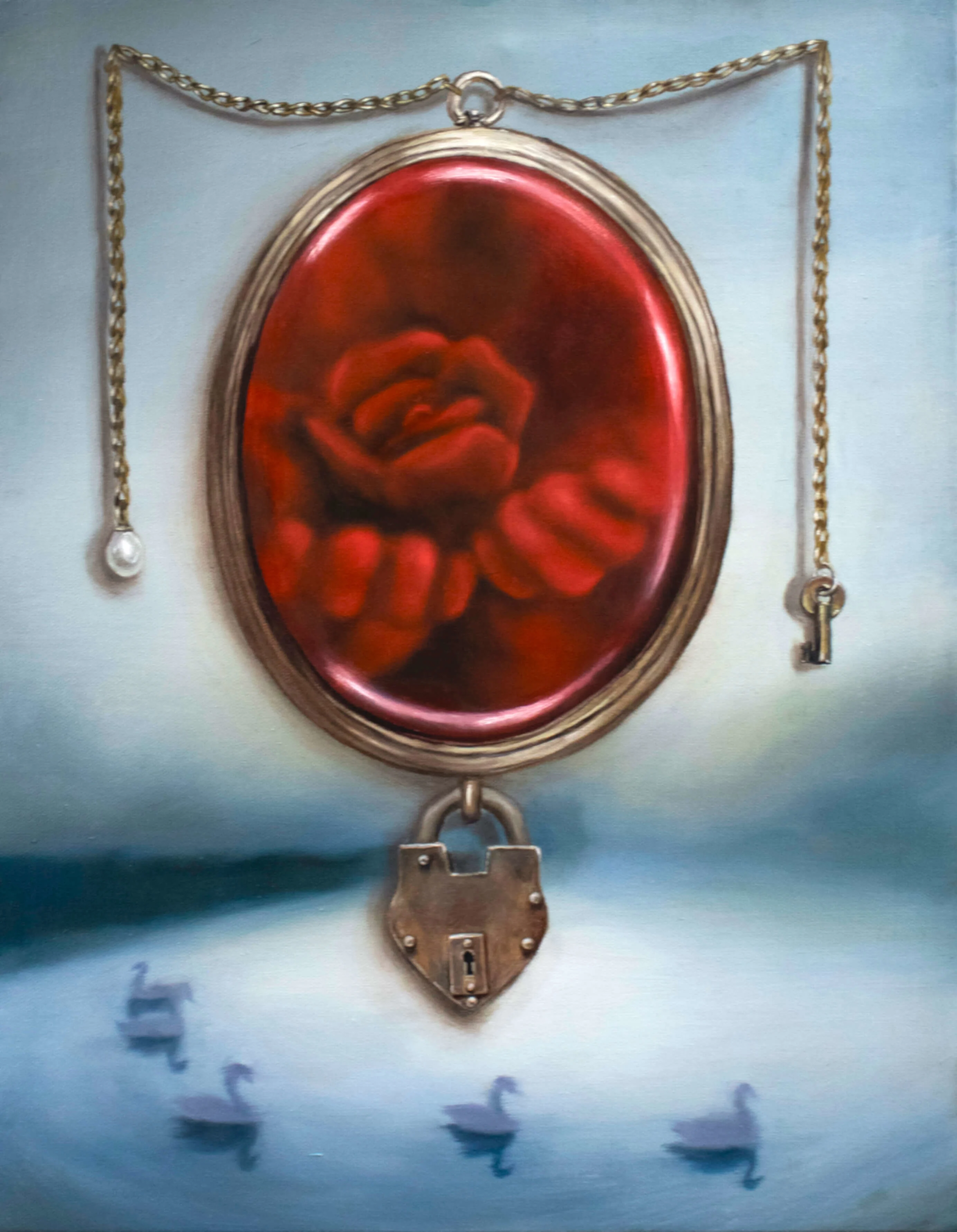
There’s a beauty to making this kind of work in today’s digital age where whole worlds of rich reference can be revealed clicking through the internet. Although her process of gathering information sounds romantic, Ella insists it’s not. Instead of visiting dusty libraries taking down tomes from the top shelves, her references are screenshots and pixels scattered across folders in various apps. Though, there is a little Manx book of fairy tales that Ella reads from every morning before she starts drawing. It’s a practice that frees her imagination from the rules of the real world and reminds her that anything is possible and believable. “Folklore doesn’t subscribe to rationality,” she says. “There's a lot of shape-shifting, contradictions and duality within them.” In her works, a butterfly has a pair of human eyes or a decorative frame is a portal to another plane.
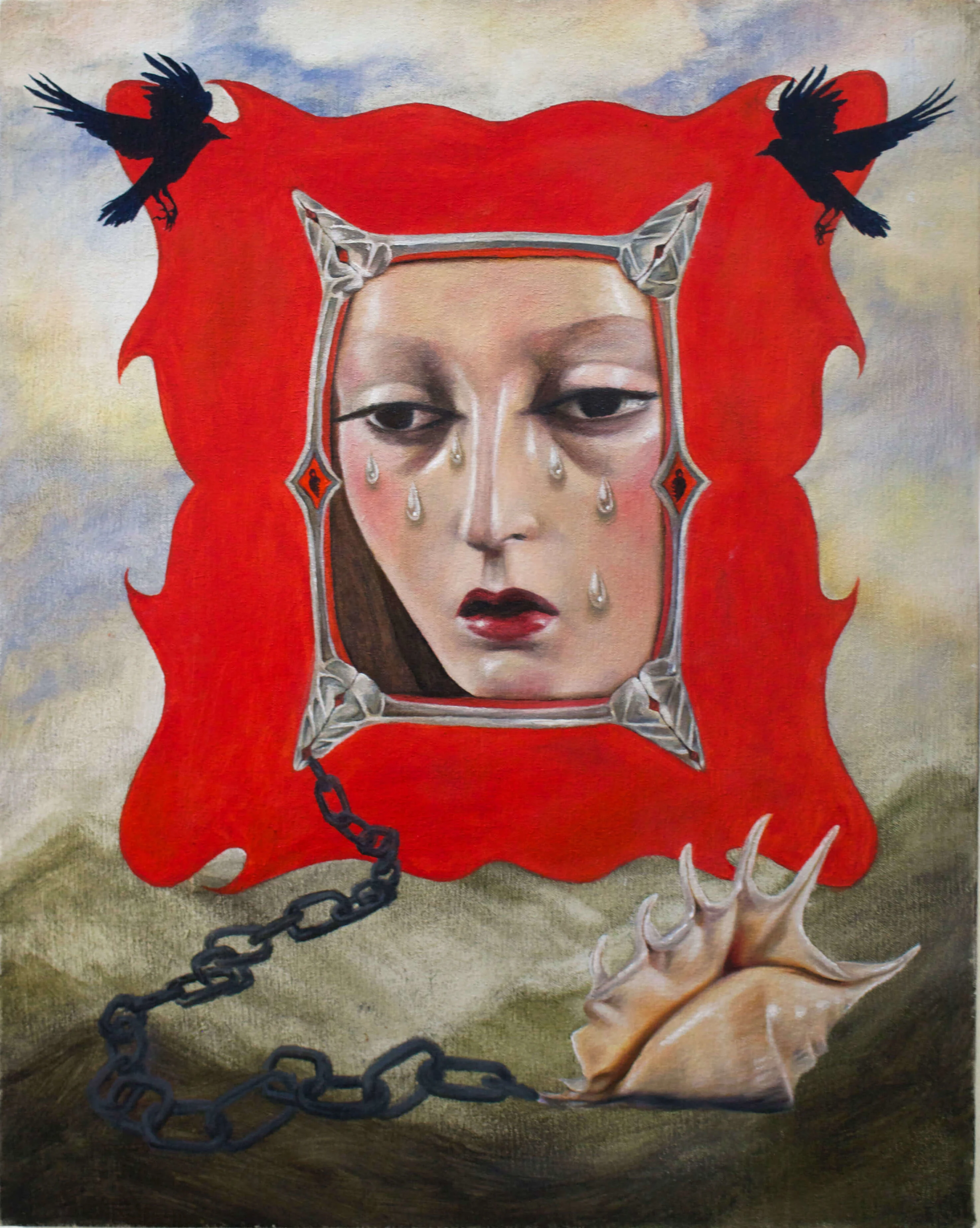
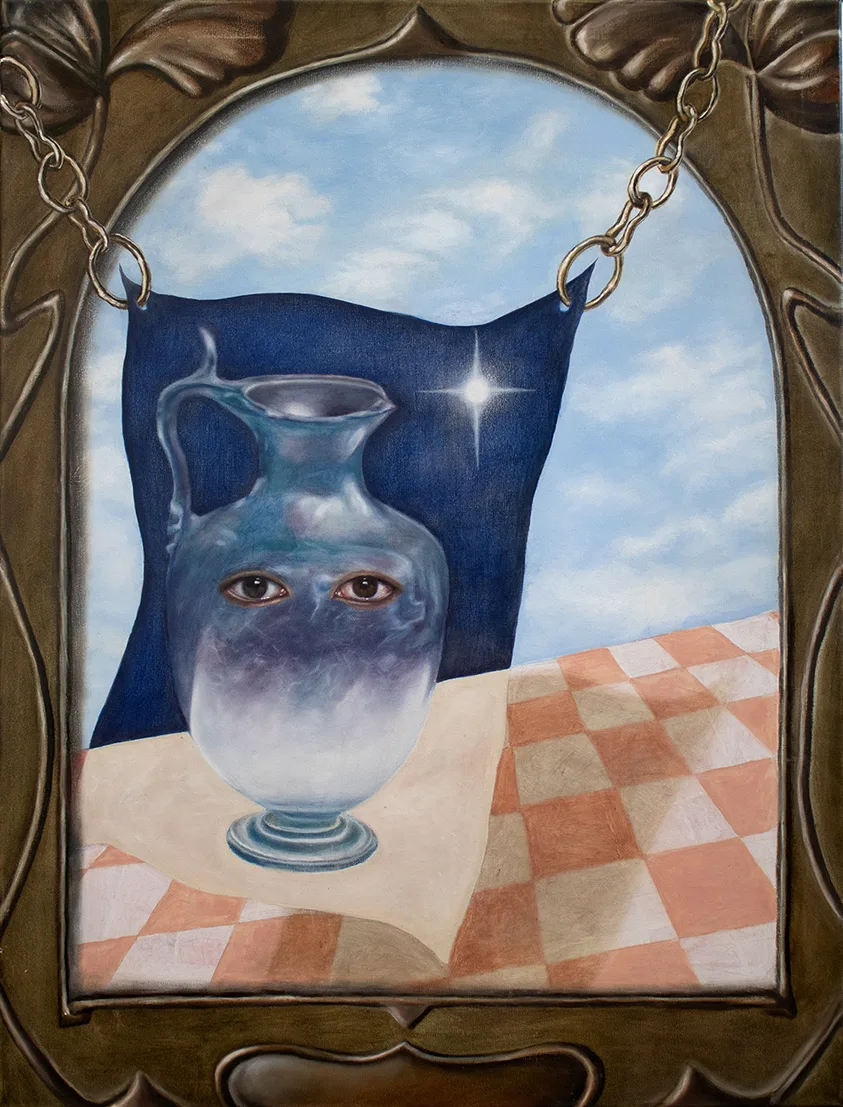
Victorian love tokens are Ella’s latest research topic. She’s interested in how humans attach feelings to objects; using something you can hold in your hand to tether to something greater, beyond our grasp. By finely painting objects in oil on canvas—like the beautiful shells she collects—she’s created a language of symbols to communicate monumental themes like life, death and hope. “I see my work as sort of a personal narrative and personal myth through universal symbols,” she explains.
In “I had your love, I have your hate,” she painted her version of the weeping Virgin Mary, a figure for the sorrow of the world, but the tearful face is flanked by two crows in flight, included to represent new life. Ella’s message in this painting is that through pain we transform and grow. She explores similar themes of death and rebirth in “Let Me Rest Now, Beneath the Trees,” which was inspired by the winter solstice, the longest night of the year. “The lamb to me represents a sort of warmth beneath the land waiting to emerge in the spring, gathering the energy from the roots of the trees.” Borrowing from centuries of story-telling (myths, legends, fairy tales, scripture) she selects the iconography that means the most to her and combines it into intricate personal codes to tell simple human truths.

Despite her appetite for the mystical, sometimes an idea sneaks in from somewhere more everyday. Before she goes to bed each night, Ella tries to do a bit of reading in the light of her bedside lamp. This nightly ritual inspired her to include an Art Nouveau version of her lamp in a recent painting as a personal symbol. “That lamp is the last light of the day, and switching it off is like saying goodbye to the day and welcoming the dream world,” she says, “a place between life and death where anything can happen, anything is possible.”

